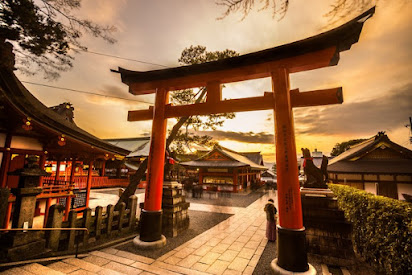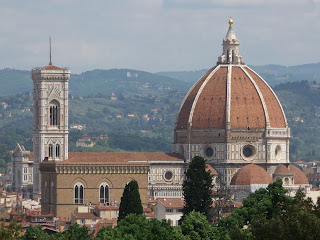Beautiful Landscape Painting from the Dutch Golden Age
Artist: Jacob van Ruisdael
Circa: 1650 - 1682
Location: Haarlem, North Holland, Amsterdam
Image hosted by: Rijks Museum
I came across this picture from the lecture videos, and I fell in love with it. My favorite aspect of View of Haarlem from the Northwest, with the Bleaching Fields in the Foreground, is the composition of the clouds. They appear to be drifting across the sky. This movement creates a beautiful contrast of light and dark on the horizon below. The clouds also play with that same contrast where the bright blue sky is more visible from behind the lighter clouds and then moving to a cluster of gray clouds blocking out the same bright blue sky on the left. Moving from the sky down to the fields and the city in the distance, the clouds have created an interesting pattern of light breaking up the heavy dark tones. As I look upon the fields, my eyes start to dart from one patch of light to the next, leading me to the massive cathedral in the background.
I have fallen in love with the shapes presented here. The foreground has an organic outline that is bathed in darkness and frames the sharp edges of the factory bathed in the light. The triangular roofs of the factory then drive our eyes upward. The soft trees are in the shadows leading us deeper into the background. Now I find myself looking at this massive cathedral and some other prominent buildings of the city. These triangular roofs stand out amongst the many smaller buildings, helping draw our eyes to the sky. The rounded edges of the clouds help me see the clouds rolling slowly across the sky.
I can see several aspects from this work that help tie it to eh Baroque movement. The biggest is the use of light throughout the piece. The sky has pieces of light within the clouds, between the clouds we have a bright sky, and the fields are covered in darkness with momentary breaks where the sun breaks through the same clouds above. Next, the implied movement from the clouds and the workers in the fields creates a subtle dynamic in a static image. The sense of depth is apparent in this image with the buildings. In the foreground, the buildings are clear and easily seen. While in the background, they have lost much of their definition. The subtle use of diagonals is seen scattered throughout this piece as well. The foreground slopes upward to the left while the factory slopes upward to the right. The clouds are also set on this same diagonal theme. They traverse the sky diagonally and never in a straight horizontal.
"Gezicht Op Haarlem Uit Het Noordwesten, Met De Blekerijen Op De Voorgrond, Jacob Isaacksz Van Ruisdael, Ca. 1650 - Ca. 1682 - Rijksmuseum". Rijksmuseum, 2022, https://www.rijksmuseum.nl/nl/collectie/SK-A-351.




I love your analysis of the elements in this painting. My eyes immediately focused on the clouds in the sky, and I did not even notice the buildings below them at first. I really love the color in the clouds and sky. I am curious how it connects to the events happening during this era, and how you think it compares to the Renaissance. I definitely see a lot of differences in the style and colors used in this piece compared to those created during the Renaissance. I could see this piece is influenced by the rise of the Merchant class and as a view of some of their home.
ReplyDeleteYou really know how to analyze a picture and how it guides its viewers. I find this to be a very calming picture, even though it has a lot of darker tones, it reminds me of the view I would have after climbing or hiking a mountain and getting to see over the valley below it. There isn't a huge angle on the ground but it does look like there is a bit of ground that you could be standing on if you were to be looking at this view in real life.
ReplyDeleteThe first thing I noticed about this painting was the amount of space used to paint the sky. It's like 70% of the painting. The huge billowy clouds are the very first thing I see, and then the tiny farm in the bit of sunlight breaking through the clouds. The sunlight really highlights just this area, and the surrounding landscape seems dark and insignificant in comparison.
ReplyDelete